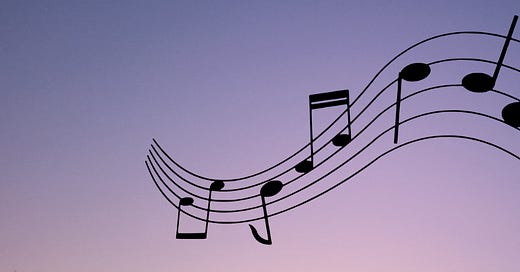Music as Speech Therapy
I grew up in a very musical family. All of our annual traditions revolve around playing music. So, naturally, when I was big enough to be able to hold an instrument, I began to play.
And when band class started at school, it quickly became my favorite subject.
Growing up, speaking was never really my thing. I wasn’t very good at it and I never knew what to say or when to say it. I still don’t.
In grade school, I was excused from graded group discussions, because I kept losing my ability to speak during them. My autism makes it very difficult to know when (and how) to insert myself in a discussion as it’s happening, especially when that discussion involves more than one person (other than myself). It also makes the concept of “tone of voice” one of the most elusive things I’ve ever tried to understand, which got me into plenty of trouble in my academic and personal life.
But when you play music, the notes — or words — are right in front of you. The mystery of “what to say” is nonexistent; rather, it’s focusing on “how to say it” that makes you a good musician.
Learning to read a new language off of the sheet music was like learning to read letters; it didn’t feel much different to me. But playing my instrument, in contrast to speaking? What a huge difference for my brain.
When you learn to play a new piece of music, you usually start by making sure you can play the right notes at the right times. “Speaking” the right notes is an important first step on the path to playing music well.
With practice, the notes start to come more naturally, and then you know it’s time to add in the next ingredient: the feelings.
Music has lots of words to describe the “how.” Crescendo, decrescendo, forte, piano. A note played staccato (separated, short) says something very different than the same note when played legato (smooth, connected). Each of these words tells a musician to play the notes on the page in a different way, which evokes different emotions in the listener.
I speak in public now.
I use the same methods and techniques I learned when I was learning my instruments. First, I compose my piece — I write down the words I will say. Then, I learn the notes: I practice my script until I know the words by heart.
Finally, once the words are etched into my brain, I add the feelings. I look at the paper and make a map of the emotions on the paper. Next to one paragraph, I might write “slow down- sad.” Next to another, “Breathe. Proud.”
This map helps me adjust my voice when I speak: a slight slowing and a lower volume for sadness, a clearer and louder voice for pride. It helps me “speak well”- that is, accommodate the audience, who are listening with the expectation of a story. They expect to be moved.
The time I spent playing music each day as a child was my speech therapy.
I don’t get nervous before performances anymore. I know what I need to do, say, or play, and I know that the more I remain in the moment during a performance, the better it will be. Whether it’s a speech or a solo, a performance tells a story. You’re there to make the audience feel something. It doesn’t have to be perfect. It just has to be real.
I still don’t know when to speak in a group, but that’s ok.
My brain’s unique needs haven’t stopped me from becoming a public speaker. Now, I speak at large events. I have been on panels and I have spoken alone to large groups of people. I regularly lead and facilitate educational sessions related to disability and neurodiversity.
When I sit on panels, I ask for the order of speakers to remain the same for each question asked. During teaching sessions, I make sure that my co-teacher knows when and how to cue me to speak. I was always able to do the things I dreamed of doing; I just needed to learn how to work with my brain’s preferences.
I often think back to that quiet kid, and my chest swells: with love for them, with pride for where I am now, and with gratitude for the music that got me here.




